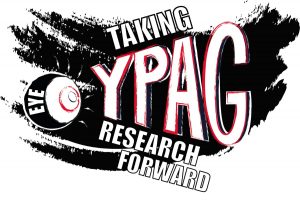By Vijay Tailor-Hamblin,
We had our 4th eyeYPAG meeting on Zoom on 19th September. I think we are all getting used to this way of doing things now and it’s quite fun to see everyone while just sitting at home.
We started off with a show and tell where we talked about what we’d been doing in the school holidays and how we feel about being back at school. Some people had been on holiday and to the seaside and quite a few if us had just stayed at home. It was interesting to hear about where everyone had been.
We agreed on some ground rules at the last meeting and we’ve been thinking about how to share so some work has been done on a film our group’s shared agreements. Some of us have voiced some of the text. It was very interactive and put our ideas across well.
My favourite part was how the hand wrote each rule out. We’l l share the ground rules and the video on this website when we’re finished. After that, we made some final decisions about the eye YPAG sweatshirts to show our logo and message to the world. We are all looking forward to wearing them soon.
l share the ground rules and the video on this website when we’re finished. After that, we made some final decisions about the eye YPAG sweatshirts to show our logo and message to the world. We are all looking forward to wearing them soon.
After a break, Annegret, one of the eye doctors who works with the group, talked to us about the research she’s planning on slowing down short-sightedness in children by wearing special contact lenses and using eyedrops. We then watched some short videos about what clinical trials are and what causes short-sightedness. Then Annegret explained her research ideas to us. We talked to her about how we would feel about having to put in eyedrops (some of us do that every day and don’t think it’s a problem) and/or wear special contact lenses.
We talked about what advice we would give researchers. These are some of the things we said:
Annegret said:
Using a videoconferencing platform such as Zoom during the Covid-19 pandemic makes it possible to consult children and young people about research whilst keeping everyone safe. The young people were attentive and engaged, and I found it easy to access the meeting and to interact with them.
The children and young people were amazingly insightful and considered how the common adverse effects of atropine (sensitivity to light and near vision blurring) would affect them. Some of the young people were short-sighted themselves, some had tried contact lenses, others contributed their experience of wearing glasses and of having to use eyedrops every day for other conditions. They gave very clear opinions on the need for communicating potential benefits to children, not parents, the option of children withdrawing from the trial, the advantages they saw in using drops only three times a week, the need for drops that do not sting and for information for children that one gets used to using drops, even if it is difficult at the start. The group’s ideas will inform the design of the research and a grant application.